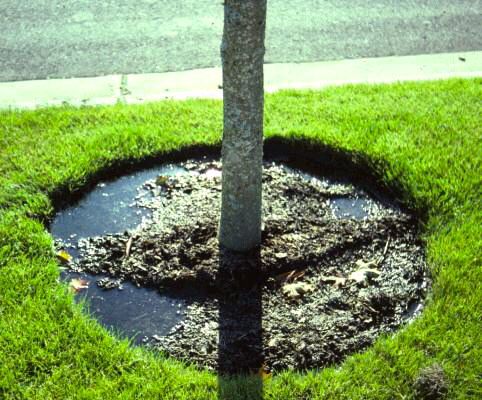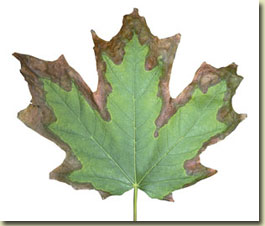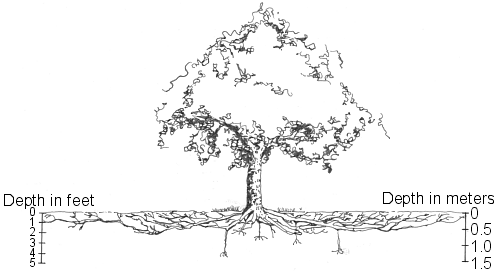Water stress
Water stress can be tricky and is the number one cause of death in immature trees. Is underwatering or overwatering the major problem though? Read more to find out the answer. Now watering can be a tricky problem. How much water is just the right amount for my tree. Well the answer to this has many factors. Species, size, time of year, soil composition and many other factors play a role in watering requirements of a tree.
Most people have had a plant that they just didn't pay enough attention to. The leaves usually start drooping and its very obvious what is going on with the poor plant. Trees may act completely different than your house plant though. Leaf droop, curling, browning, tip dieback and chlorosis can all be signs of underwatering. Now fortunately fixing underwatering takes no science. Just water the tree and it should start to bounce right back to shape. But how much water? What are the best techniques for watering? Should I be fertilizing too?
These are all normal questions and the answer varies for every situation. That's why when you hear a generic answer to your question then you need to be asking for more reasoning. Now its easy to trust your nursery, landscaper or gardener knows what they are doing. Have they even checked your soil composition?
In many situations it is very easy to drown a tree. That's why it is said that over 95% of immature trees die of overwatering. Here is a simple situation where a tree will drown with little knowledge of what a tree needs. Most people have clay composition soils in the metro area. When you dig a hole it is normally dug way to small. The tree is then stuck into that hole and backfilled with some nice peat or loam soil. The tree most likely came from a farm or farm field type setting where the soil was rich and water absorbent. Now in the case of the clay soil the water tends to sit on the top of it and runoff. A nice peat hole will fill up pretty easily and if the surrounding soil is clay then it forms a nice underwater pond.
Now this seems great because the tree needs water right? Well the trees roots also need oxygen. Oddly enough the soil under you has alot of airspace for roots to move and breathe. If you constantly fill the airspace with water the tree suffocates. Now that you are afraid of watering we can ease you out of fear of killing your new tree.
When your tree is planted the main objective is to create new growth. You must think underground though to a mysterious place that you cannot see. The box or container you got your tree in was way to small of an environment for it to grow in. The fact that these things are still alive is a miracle. Ok so next is that 95% of the little feeder roots can be destroyed when you are planting or transplanting a tree. So instantly the tree is at a disadvantage. Now you need to grow roots to make up for the losses and do it quick. Do not reach for any fertilizers as this could kill the struggling plant right away. The right choice will be a root growth hormone. Usually kelp based treatments are ideal for any trees. Just follow the instructions and your tree is on the right path. Next will be deep root feedings. Think about soaking the ground with a device that can expand air pockets underground allowing for root expansion. Do these in place of frequent above ground watering's. Do them far less though as you want the tree to grow strong on its own. Allow periods of dry time to let the tree breathe and expand underground.





